Related Research Articles
Yagyū Jūbē Mitsuyoshi was one of the most famous and romanticized of the samurai in Japan's feudal era.
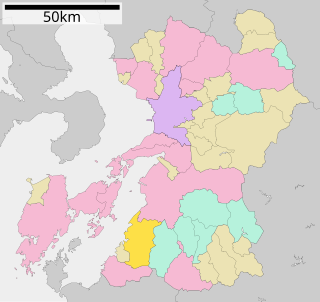
Ashikita is a town located in Ashikita District, Kumamoto, Japan.
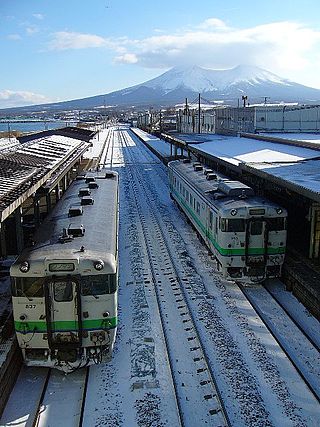
Mori is a town located in Oshima Subprefecture, Hokkaido, Japan.

The Tokugawa clan is a Japanese dynasty that was formerly a powerful daimyō family. They nominally descended from Emperor Seiwa (850–880) and were a branch of the Minamoto clan through the Matsudaira clan. The early history of this clan remains a mystery. Members of the clan ruled Japan as shōguns during the Edo Period from 1603 to 1867.
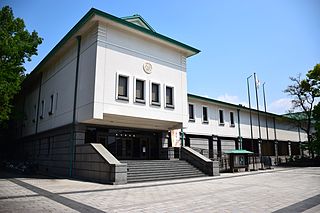
The Tokugawa Art Museum is a private art museum, located on the former Ōzone Shimoyashiki compound in Nagoya, central Japan. Its collection contains more than 12,000 items, including swords, armor, Noh costumes and masks, lacquer furniture, Chinese and Japanese ceramics, calligraphy, and paintings from the Chinese Song and Yuan dynasties (960-1368).
Toshiyuki Horie is a Japanese author, translator, and scholar of French literature.
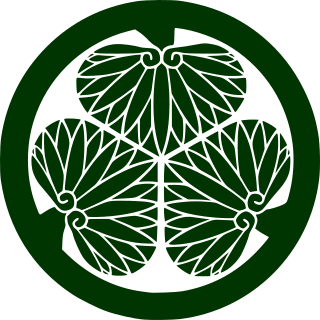
The Owari Tokugawa family is a branch of the Tokugawa clan, and it is the seniormost house of the Gosanke.

Motoichi Kumagai was a Japanese photographer and illustrator of books for children, known for his portrayal of rural and school life. He has illustrated numerous children's books, books containing his photography, and other works. His works have won prizes, beginning with a photography prize from the Mainichi Shimbun in 1955.

Asahikawa Museum of Sculpture in Honor of Teijiro Nakahara is a sculpture museum in Asahikawa, Hokkaidō, Japan. The building was called the Asahikawa Kaikōsha (旭川偕行社) and used as the officer's social club by the 7th Division of the Imperial Japanese Army from 1902 until 1945. In 1968, it became the Asahikawa Museum of Local History. The building is designated an Important Cultural Property.
Masahiro Motoki is a Japanese actor. He portrayed protagonist Daigo Kobayashi in Departures, which won the 81st Academy Awards for Best Foreign Language Film. His performance earned him the Award for Best Actor at the 2009 Asia Pacific Screen Awards, at the 3rd Asian Film Awards and at the 32nd Japan Academy Prize.
Shirakoya Okuma, also known as Kuma, was a Japanese woman who attempted to murder her husband with the help of a maid. The incident inspired bunraku puppet plays.

The Awa Tanuki Gassen (阿波狸合戦) is a Japanese legend that takes place in the Awa Province. The legend is about a great war between two tanuki powers.

The Hokkaido characters, also known as Aino characters or Ainu characters, are a set of characters discovered around 1886 on the Japanese island of Hokkaido. At the time of their discovery, they were believed to be a genuine script, but this view is not generally supported today.
Tokudaiji Kin'ito was a Japanese kugyō during the Bakumatsu period.

Mitsuya Kurokawa was a Japanese guitarist who was most known to be in 1986 Omega Tribe.

Say You to Yo Asobi is a Japanese Internet variety show broadcasting weeknights on AbemaTV's Anime Live Channel. The show features voice actors, who have appeared in various anime and video game series, participating in acting scenarios, quizzes, and talk segments. The show has been running since April 2018 and celebrated its 1,000th episode run in 2021.
Maki Kawase is a Japanese voice actress from Chiba Prefecture who is affiliated with Arts Vision. She played her first main role in 2018, voicing the character Elle Hoshino in the anime television series Dragon Pilot: Hisone and Masotan. She is also known for her roles as Junko Konno in Zombie Land Saga, Yakumo Saotome in Val × Love, Lia in Konosuba Fantastic Days, Kunai Zenow in Monster Girl Doctor, and Yuna in Kuma Kuma Kuma Bear.

In Japan, shinise are long-established businesses that have been in operation for a long time, at least for a hundred years. Some are older than a thousand years. Japan has significantly more very old businesses than other countries, and they and their products enjoy a particular prestige in Japan.
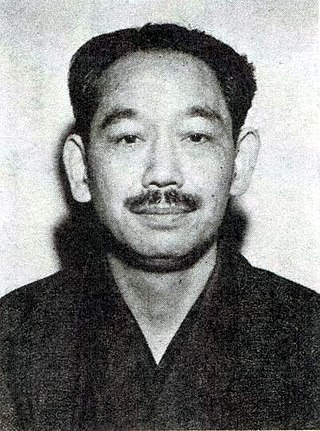
Sōhachi Yamaoka from Niigata was a Japanese author. He wrote a number of historical novels. Politician Kenji Yamaoka is an adopted son. In 1968, he won the Yoshikawa Eiji Prize for his historical novel Tokugawa Ieyasu.
References
- 1 2 Miura, Kōichi. "木彫り熊、発祥の地・八雲から北海道内へ" (PDF). The Foundation for Research and Promotion of Ainu Culture (in Japanese). Retrieved 2017-06-09.
- ↑ "「熊彫」の誕生 徳川義親と八雲の人々とのかかわり". 公益財団法人徳川黎明会 (in Japanese). Retrieved 2017-06-09.
- ↑ "木彫置物 鮭を背負う熊". Tokugawa Art Museum (in Japanese). Archived from the original on 2014-12-19. Retrieved 2017-06-09.
- ↑ Takezawa, Michiko (2002). 木霊の再生 : 柴崎熊の魅力を探る (in Japanese). Tokyo: Nihon Bungeisha. p. 93. ISBN 978-4835525556.